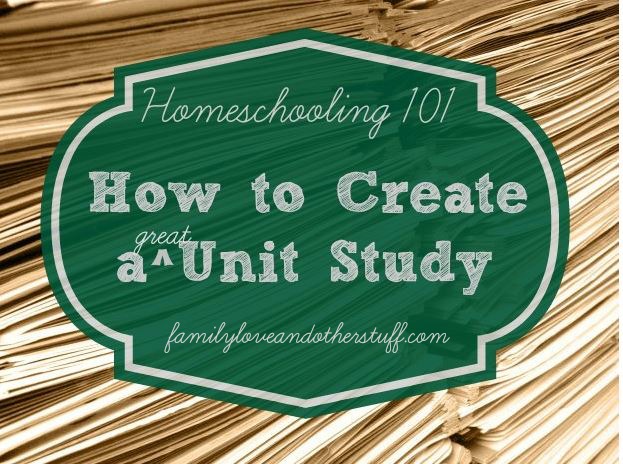Ever wonder how to get everything together for your homeschooling lessons? Make it easy on yourself by planning and creating a Unit Study. That way you stay focused and your students get the most out of the lessons. My kids like to focus on a single subject each week, so Unit Studies are a perfect way of teaching them about topics that they are interested in..
How to Create a Unit Study
The awesome thing about Unit Studies is that you can create one lesson plan, and use it for several grade levels. Unit Studies are perfect for kids that get really interested in one subject and want to focus on it for a while, because a good Unit Study is well-rounded enough to justify spending a week learning about something like dolphins. Including all subjects (or as many as possible) into your Unit Study lesson plan is the key to unlocking great learning potential. Unit Studies are very hands-on and project oriented, so they’re also perfect for eager but impatient learners.
What is a Unit Study?
As explained above, Unit Studies are well-rounded lesson plans for students of all ages! Basically, you choose a topic – or have your child choose one – and then integrate science, math, social studies, literature, art, etc. If you’re learning about dolphins, you can do a math sheet with dolphins on it, and then learn about the history of dolphins, too! Visit Homeschool in the Woods to see an example of a great Unit Study on The War Between the States.
Creating a Well-Balaned Unit Study
Objective: The perfect Unit Study will have a clear objective, and will incorporate as many subjects as possible. Start a list of things you feel need to be covered, and mastered. Finish the Unit Study with a “final project”, to show that your child understood each portion of the lesson.
Plan: I like to make a “mind map” type design on a piece of paper. Draw a circle around the topic, then draw lines to several other circles, with the core subjects listed. So, your main bubble will connect to math, science, etc. Then from those bubbles, you draw more. For example, the art bubble may have a finger painting project using sea salt and blue paint for your Dolphin Unit Study.
Gather: Once you have your plan mapped out, scour the internet for resources! Pinterest is a great site and is full of literally an endless amount of homeschooling resources. Use it! The great thing about homeschooling is that you have free reign of the resources you use. So, don’t pay for things when you can get them for free.
Piece together: Head to the library to check out the books that you need for your Unit Study. See if there are documentaries or other DVDs to supplement your learning process while you’re there! Print out the worksheets you need, or set up your lapbooking notebook. However you do it, just have everything together in one spot to make it easy as pie.
Implement: You’ve planned, you’ve gathered, and you’ve put the Unit Study together. Now, it’s time to have fun! Get the kids together and tell them what you have ready for them – get them excited about the Unit Study! Ask if they have any questions or suggestions, then get started! The most important thing, besides learning, is to have fun! That’s why Unit Studies are so amazing.
Resources
Brainstorming PDF for Unit Studies
Creating Unit Studies
Designing Unit Studies
Planning Unit Studies




